The reproduction of this content in any form is illegal and will be prosecuted to the fullest extent of the law; for personal and educational use only.
Before You Begin
Before you get started learning, here are some tips to help you become the best guitarist you can be:
- Dont overwhelm yourself! Pace your learning and practice everything thats taught
- Dont skip around or put off learning something just because you dont find it interesting, we all have to learn the chords and scales when starting to play
- Get yourself a metronome (they keep time) and a tuner (even if its just a mobile application, just make sure it employs your microphone)
- Practice every day for at least 30 minutes and make sure to learn to play the songs you enjoy listening to (otherwise technique and theory work can be very boring!)
- Have fun no matter what youre doing
When youre stuck playing through your scales every day, make sure to keep number five in mind, whether youre learning a song or changing your strings, having fun is the most important thing of all!
Guitar Basics
Parts of the Guitar
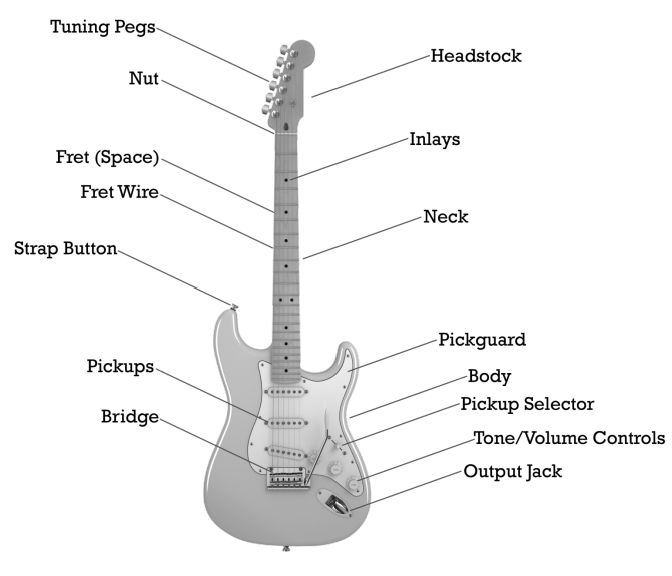
The nut keeps the strings aligned as they go across the front side of the neck, called the finger or fretboard. Your guitar may or may not have a pickguard and it may be shaped differently. The bridge of your guitar may have a tremolo (whammy) bar or a hardtail. Your pickups may look different, but you should still have a switch somewhere on your guitar so you can pick which one is being used. Typically, all the way up is the neck pickup and all the way down is the bridge pickup. On guitars with two pickups, the middle/second position is using both pickups, while on those with three its using only the middle pickup (third position). With five way switches, fourth position is the neck and middle (nearly all the way up), and second position is the middle and bridge (nearly all the way down).
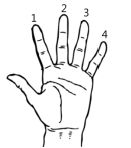
Finger Numbers
When playing guitar, your fretting hand fingers each get a number. Youre fretting hand will be the opposite of your writing hand, so if youre right-handed use your left, and if youre left-handed use your right. Were going to assume youre right handed and will be fretting notes with your left-hand. Your pointer finger is 1, your middle finger 2, your ring finger 3, and your small finger is 4. Your thumb wont get a number because you wont be using it to fret any strings.
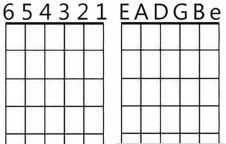
String Names
The strings on your guitar may be referred to in multiple ways, the simplest being by number. The thickest string (the one that should be closest to your chin when holding your guitar) is number 6 and the thinnest string (closest to the floor) is number 1. You can also refer to the strings by the note they are tuned to when in standard tuning. Well get your guitar in-tune momentarily, but have a look at the note names in the diagram.
Since both the top and bottom string are tuned to an E note, we have a different way to refer to these two. The thickest E is called the low E which is referring to pitch, not positio n (make sure to remember that) and the high e is your thinnest string.
Chord Frames
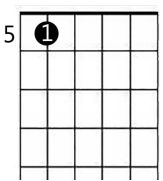 Chord frames show a snapshot of the neck of your guitar and tell you how to play a chord. When standing up straight (vertical), its like you have your guitar standing up in front of you and youre looking at the neck, so the thickest string is on the left and the thinnest string is on the right. They can also be on their side, if thats the case, its like someone is holding your guitar the wrong way horizontally, so the thickest string is on the bottom and the thinnest is on top. If there is a number shown next to a space, thats telling you what fret you should be playing in, looking at the diagram, you can see were in the 5 th fret. The dots tell you what strings to hold down on which fret and the numbers on the dots (which wont always be there) tell you which fingers to use.
Chord frames show a snapshot of the neck of your guitar and tell you how to play a chord. When standing up straight (vertical), its like you have your guitar standing up in front of you and youre looking at the neck, so the thickest string is on the left and the thinnest string is on the right. They can also be on their side, if thats the case, its like someone is holding your guitar the wrong way horizontally, so the thickest string is on the bottom and the thinnest is on top. If there is a number shown next to a space, thats telling you what fret you should be playing in, looking at the diagram, you can see were in the 5 th fret. The dots tell you what strings to hold down on which fret and the numbers on the dots (which wont always be there) tell you which fingers to use.
Notice that its telling you to use your first finger to hold down the A (5 th ) string on the 5 th fret. If you ever see an X on top of a string, dont play it. An O means play the string open.
Getting in Tune
Getting your guitar into standard tuning is essential if you want to sound good when you play. Save yourself the trouble of hours worth of frustration and get yourself a clip-on tuner. They go right on your headstock and will get you in tune within a few minutes. If thats not an option, you can use a method called relative tuning or the fifth fret method. Its important to note that this method tunes all of your strings in relation to your low E string so if th at strings not already in tune youre not going to end up in standard tuning, but youll still sound alright.
Fifth Fret Metho d
- Hold your low E string down on the 5 th fret and play the A string open (without holding it down). Turn the tuning peg of the A string until you can play both strings simultaneously and the pitches match. When the strings are played together, listen for beats. The shorter the pulses the more out-of-tune the string is. To raise the pitch, tighten the string, to lower the pitch, loosen it.
- Next, hold your A string down on the 5 th fret and play the D open. Tune the D string until they match in pitch.
- After that, hold your D string down on the 5 th fret and tune the open G to that note.
- Now , hold the G down on the th fret and tune the open B string to that note.
- Lastly, hold the B on the 5 th fret and tune the high e string to that same note.
As you can see, this method can be a little time consuming if youre completely out of tune, but its good to memorize in case its ever your only option. This is also an easy way to make sure youre in tune before practicing. Using your ears is very important to playing well on guitar!
 If you happen to have a piano or keyboard lying around, here are the notes to use.
If you happen to have a piano or keyboard lying around, here are the notes to use.
G et in the habit of checking to make sure youre in tune each time before you play. If you find your guitar going out of tune frequently, stretch your strings. Newer strings have to stretch to length before theyll keep their tuning. Stretch them by grabbing them and pulling them outwards from the body. You should also always tune up to a note, instead of down. So, dont tune from an F to an E, tune from a D to an E (upwards in pitch).
Holding Your Guitar
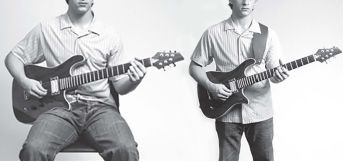 When practicing, you can choose to either sit or stand. Sitting will probably be your choice. If so, use an armless chair so you have plenty of room to move . You may also want to use a foot stool to bring your feet to a comfortable height. When sitting, rest the body of your guitar on the leg thats on the same side as your strumming hand. When standing, always use a strap. Your guitar should be at about the same height standing up as it was when you were sitting down. Keep the neck slightly elevated for ease of playing. Whether sitting or standing, you shouldnt have to support the neck at all with your hands, the strap and the way youre positioned should support the guitar for you.
When practicing, you can choose to either sit or stand. Sitting will probably be your choice. If so, use an armless chair so you have plenty of room to move . You may also want to use a foot stool to bring your feet to a comfortable height. When sitting, rest the body of your guitar on the leg thats on the same side as your strumming hand. When standing, always use a strap. Your guitar should be at about the same height standing up as it was when you were sitting down. Keep the neck slightly elevated for ease of playing. Whether sitting or standing, you shouldnt have to support the neck at all with your hands, the strap and the way youre positioned should support the guitar for you.

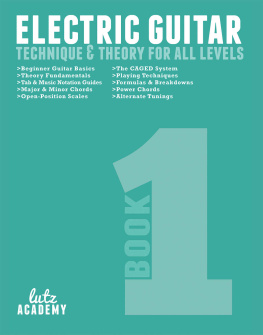


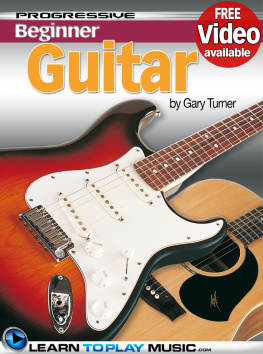
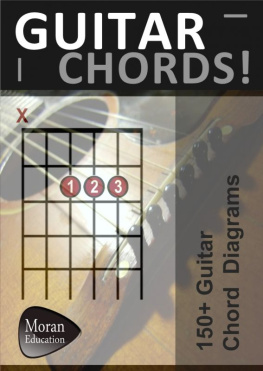

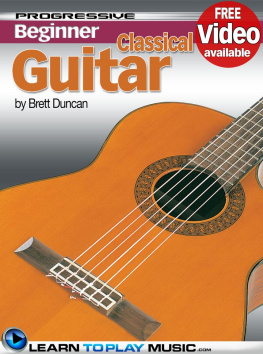
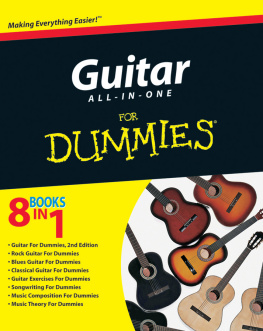
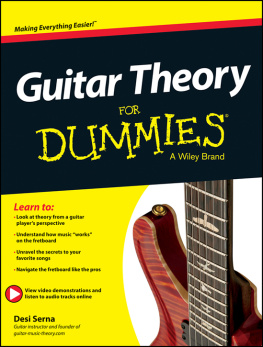
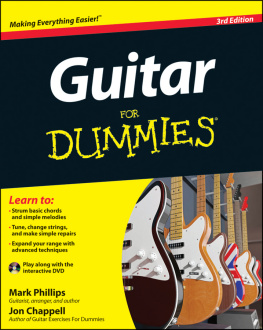

 Finger Numbers
Finger Numbers String Names
String Names Chord frames show a snapshot of the neck of your guitar and tell you how to play a chord. When standing up straight (vertical), its like you have your guitar standing up in front of you and youre looking at the neck, so the thickest string is on the left and the thinnest string is on the right. They can also be on their side, if thats the case, its like someone is holding your guitar the wrong way horizontally, so the thickest string is on the bottom and the thinnest is on top. If there is a number shown next to a space, thats telling you what fret you should be playing in, looking at the diagram, you can see were in the 5 th fret. The dots tell you what strings to hold down on which fret and the numbers on the dots (which wont always be there) tell you which fingers to use.
Chord frames show a snapshot of the neck of your guitar and tell you how to play a chord. When standing up straight (vertical), its like you have your guitar standing up in front of you and youre looking at the neck, so the thickest string is on the left and the thinnest string is on the right. They can also be on their side, if thats the case, its like someone is holding your guitar the wrong way horizontally, so the thickest string is on the bottom and the thinnest is on top. If there is a number shown next to a space, thats telling you what fret you should be playing in, looking at the diagram, you can see were in the 5 th fret. The dots tell you what strings to hold down on which fret and the numbers on the dots (which wont always be there) tell you which fingers to use. If you happen to have a piano or keyboard lying around, here are the notes to use.
If you happen to have a piano or keyboard lying around, here are the notes to use. When practicing, you can choose to either sit or stand. Sitting will probably be your choice. If so, use an armless chair so you have plenty of room to move . You may also want to use a foot stool to bring your feet to a comfortable height. When sitting, rest the body of your guitar on the leg thats on the same side as your strumming hand. When standing, always use a strap. Your guitar should be at about the same height standing up as it was when you were sitting down. Keep the neck slightly elevated for ease of playing. Whether sitting or standing, you shouldnt have to support the neck at all with your hands, the strap and the way youre positioned should support the guitar for you.
When practicing, you can choose to either sit or stand. Sitting will probably be your choice. If so, use an armless chair so you have plenty of room to move . You may also want to use a foot stool to bring your feet to a comfortable height. When sitting, rest the body of your guitar on the leg thats on the same side as your strumming hand. When standing, always use a strap. Your guitar should be at about the same height standing up as it was when you were sitting down. Keep the neck slightly elevated for ease of playing. Whether sitting or standing, you shouldnt have to support the neck at all with your hands, the strap and the way youre positioned should support the guitar for you.